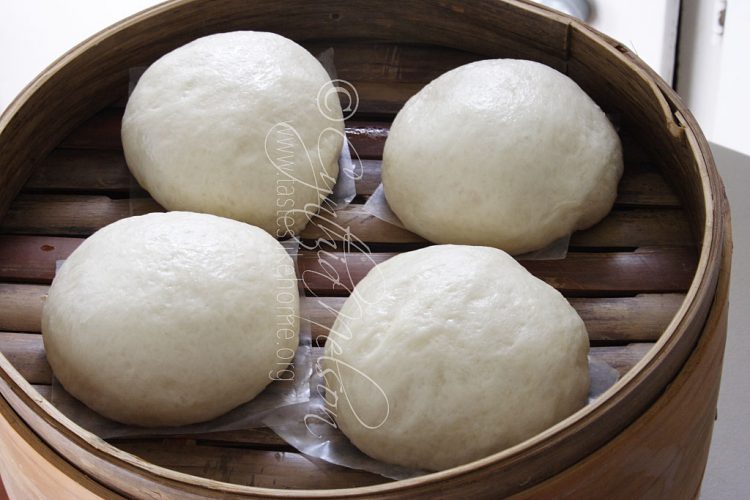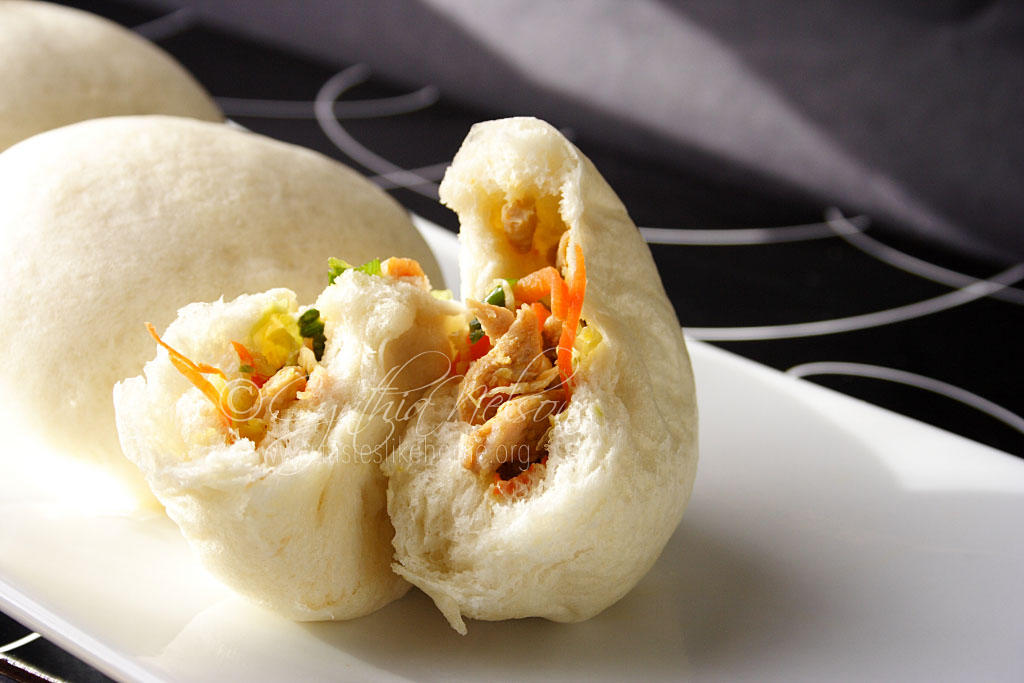
I’ve written before of how incredibly blessed I feel to have been born and lived in a country that is culturally rich and ethnically diverse. The immersive experiences and the access, whether to part take, admire, or learn, are incomparable. Each year I try to make something to mark the occasion and this year was no different. I made one of my favourite Chinese treats that takes me way back to my childhood; to loved ones, family and friends who have transitioned; and to a place, a church razed to the ground more than a decade ago that has since been rebuilt – Sacred Heart Church.

Back in the day, in order to assist in the raising of funds for renovations to be done to the church, there would be weekly cake sales that would take place each Saturday morning in the foyer of the then Royal Bank of Canada on Water Street. It was more like a bake sale because there was always a lot more than just cakes on sale. I would go with my mom, Granny Harris, Auntie Olga, Auntie Enid (Cheong) and Auntie Henrietta (Watson) , some of the “the chief cooks and bottle washers” of the bake sales. The ladies raised quite a bit of money from those sales at the bank. The bank used to be open on Saturday mornings and so there were always customers going in and out and of course, the bank tellers and managers all patronised our stall. Oh for the days when banks opened in the afternoons and Saturday mornings (lol).
Certain items always arrived early at the bake sales and then there were those that would be delivered a couple of hours later, and one of those items that was always delivered later was the Pau. I noticed that the Pau rarely made it to the table for sale to the public, the women manning the stall usually bought it and some would be packaged for regular customers who would have pre-ordered. The Pau was special; it was always in demand and demand outweighed supply.
Pau is a type of Chinese steamed filled bun that’s served as Dim Sum. Pau can be eaten at breakfast or at any time. The fillings are varied; they can be filled with beef, pork or chicken, bean paste or vegetables.
My mom always ordered Pau for us whenever it was available, and what a treat that was. Of all the treats my mom would buy for us at the bake sale, I always prized the Pau because the other things I’d usually get at home because mommy would make them, but the Pau, uh uh, that was different, that was special. I used to marvel at the delicacy of the dough, and the filling was always a delight, most of the time it was filled with chicken and vegetables.
Yesterday, I made Pau. Filled with emotions and memories, I stood for a while staring at the two puffed steamed dumplings on my plate. I whispered the names of the aunties and my Mom. I bit into one and it took me way back.
Cynthia
cynthia@tasteslikehome.org
Chicken Pau
Yield: 20
Special equipment: steamer/steamer racks and pots/pans to facilitate steam racks
INGREDIENTS
For dough:
2/3 cup warm water (110 – 115 degrees F)
1/3 cup granulated sugar
1 tablespoon instant yeast
2+¼ cups all-purpose flour
1/8 teaspoon salt (a pinch)
½ teaspoon baking soda
½ teaspoon canola or vegetable oil (plus extra for rubbing dough)
1+ ¾ tablespoons vegetable shortening (3/4 oz)
For filling:
12 oz thinly cut skinless, boneless chicken breast
1 teaspoon grated ginger
1 teaspoon grated garlic
¼ teaspoon toasted sesame oil
¼ teaspoon pepper sauce
2 teaspoons soy sauce
1 tablespoon vegetable or canola oil
1 cup shredded carrots
1 cup shredded Savoy cabbage (crinkled leaf cabbage) use regular if you don’t have
½ cup thinly sliced green onions/scallions (white & green parts)
Salt to taste
DIRECTIONS
For dough:
1. Add sugar and water to medium bowl and stir to dissolve sugar.
2. Add flour, yeast, salt and baking soda to large bowl and mix thoroughly.
3. Create a well in the centre of the flour; pour in the sugar water and ½ teaspoon oil Mix together; as soon as the liquid is incorporated (dough will still be crumbly), toss in the vegetable shortening and knead to make a dough (depending on where you are you may need to add a little more water but be careful not to make the dough too wet. Turn the dough on a work surface and knead for 5 minutes. It is important that the dough be kneaded for this time so that the gluten can develop and give the cooked dough the desired lightness and texture when cooked.
4. Rub the dough with oil and transfer to an oiled bowl. Cover and let rise in a warm place for 1 ½ to 2 hours or until dough has more than doubled in size
For filling:
The filling needs to be cooled so make this as soon as you’re done kneading the dough and setting it to rise.
1. Add chicken, ginger, garlic, sesame oil, pepper sauce and soy sauce to a bowl and toss to mix. Let marinate for at least 30 minutes.
2. Heat oil in wok or karahi until almost smoking; toss in chicken and spread out in a single layer, let cook for one minute and then toss and spread out again to cook for another minute or until fully cooked. Remove from pan and set aside to cool completely.
3. Add carrots, cabbage and green onions to cooled chicken and toss to mix. Taste for salt and adjust if necessary. Set aside filling.
Assembling:
1. Punch down risen dough, knead for a minute or 2 and let rest for 10 minutes.
2. Cut dough in half and then cut each half into small pieces about 1.2 ounces (35 grammes). Form into balls.
3. Take one piece of dough (cover the rest while you work so that the dough does not dry out), using your fingers, press the dough into a circle and then roll into a 3-inch circle on a work surface getting the ends thin and the middle thick.
4. Cup the rolled dough in your hand and spoon in 1 heaped tablespoon of filling. Use the thumb of the hand in which the stuffed dough sits to gently press down the filling while you use your other hand to pinch the dough and seal in the stuffing. Ensure that the stuffing is secure. Rub a little oil on the stuffed Pau and place on a piece of parchment paper and set aside on a baking sheet. Continue rolling and stuffing each piece of dough until all is done. Cover baking sheets loosely with plastic wrap and leave dough to rise for 45 minutes to an hour.
Add water to karahi, wok or pot and bring to a roaring boil. Working in batches, add the risen Pau to the bamboo steamer (handle gently, you don’t want to deflate the Pau), cover the steamer and transfer to wok or karahi. If using a pot with metal steamer, add to pot and cover and let steam for 10 minutes.
If you are using a bamboo steamer, remove from wok/karahi after the 10-minute cooking and wait 7 – 10 minutes before opening lid! If you are using a regular pot with a steamer, remove pot from stove and wait for 7 – 10 minutes before removing cover. Transfer cooked Pau to trays and let cool while you continue to cook the rest.
Serve warm or at room temperature
Pau can be stored in airtight containers in the refrigerator. Re-steam until hot to serve.






